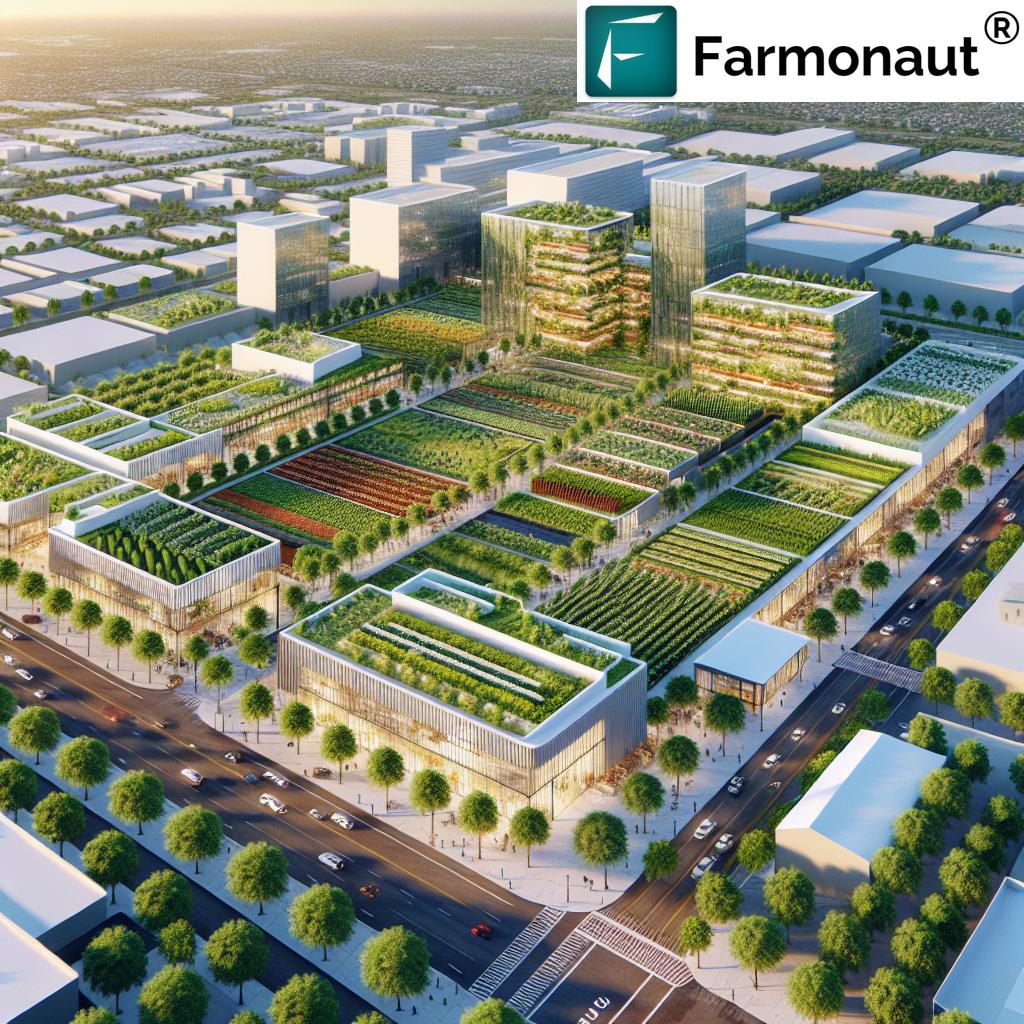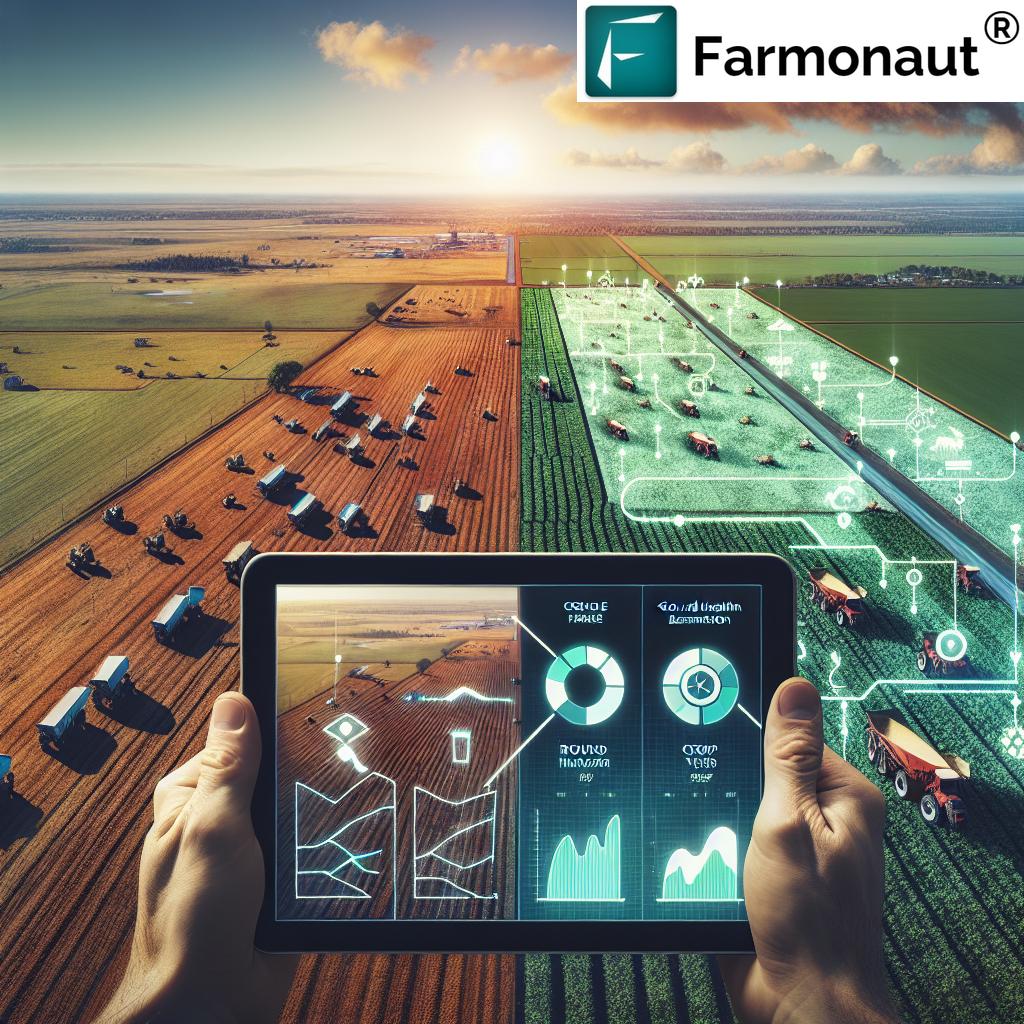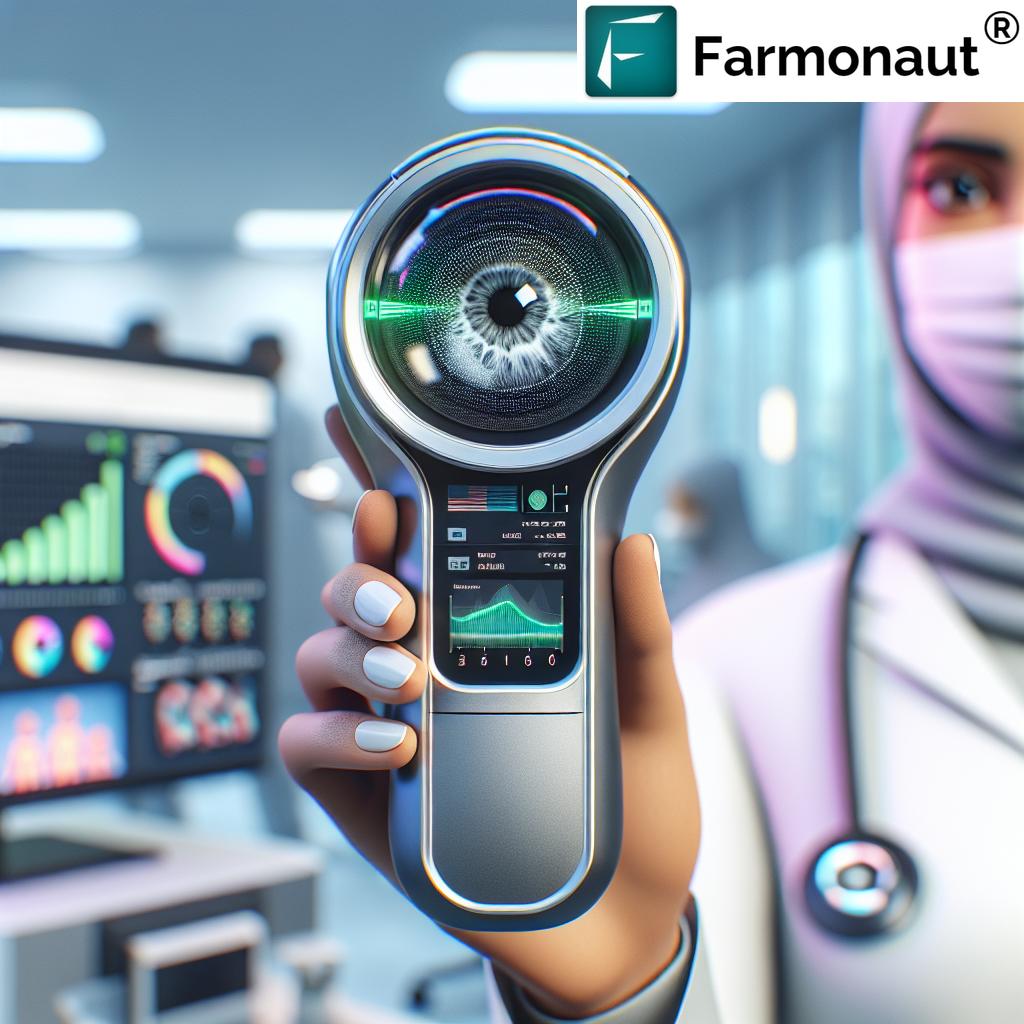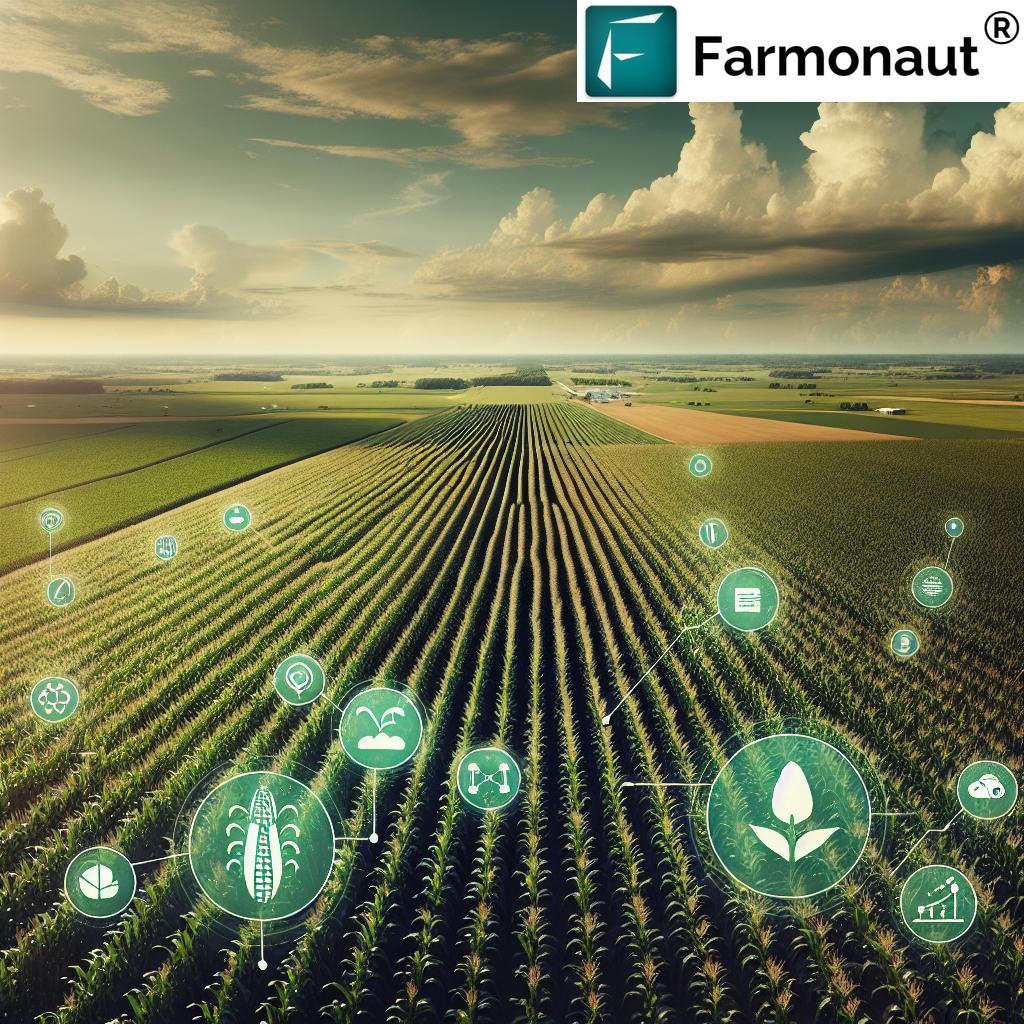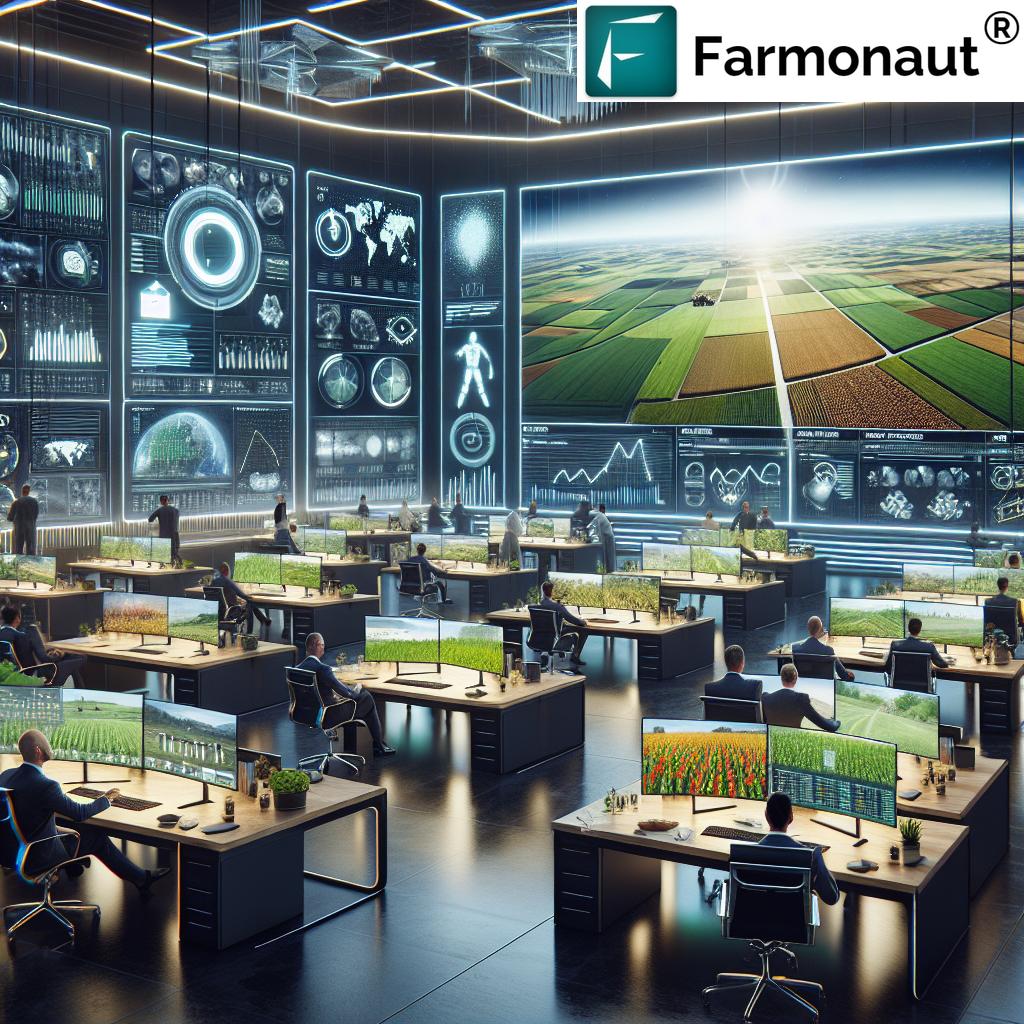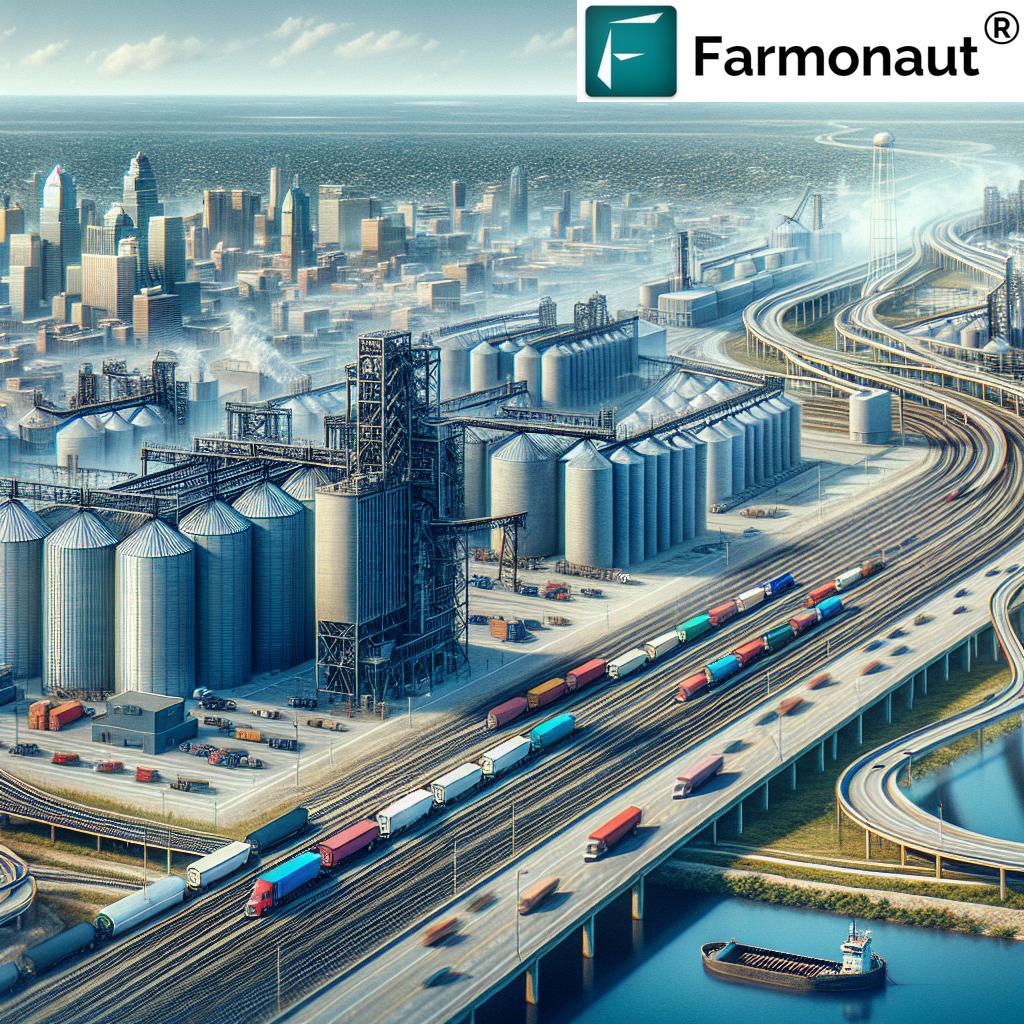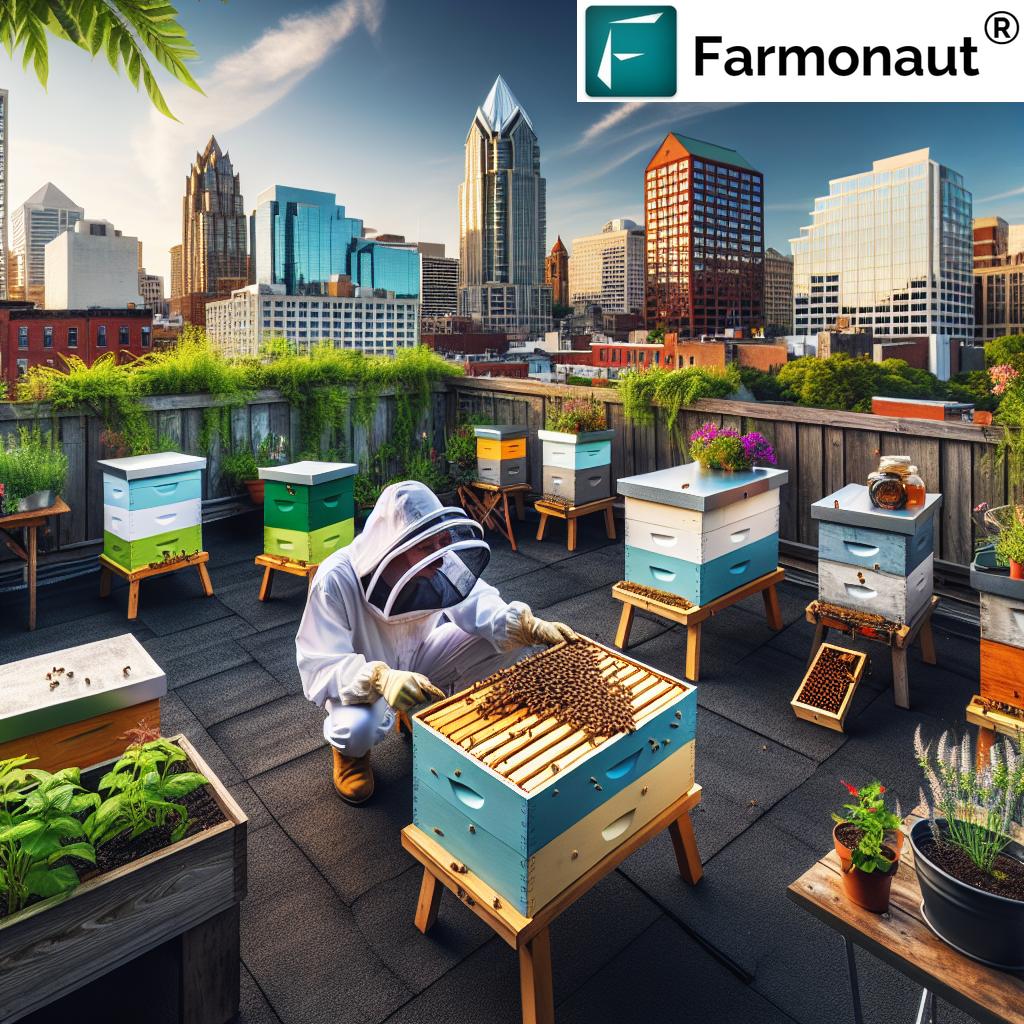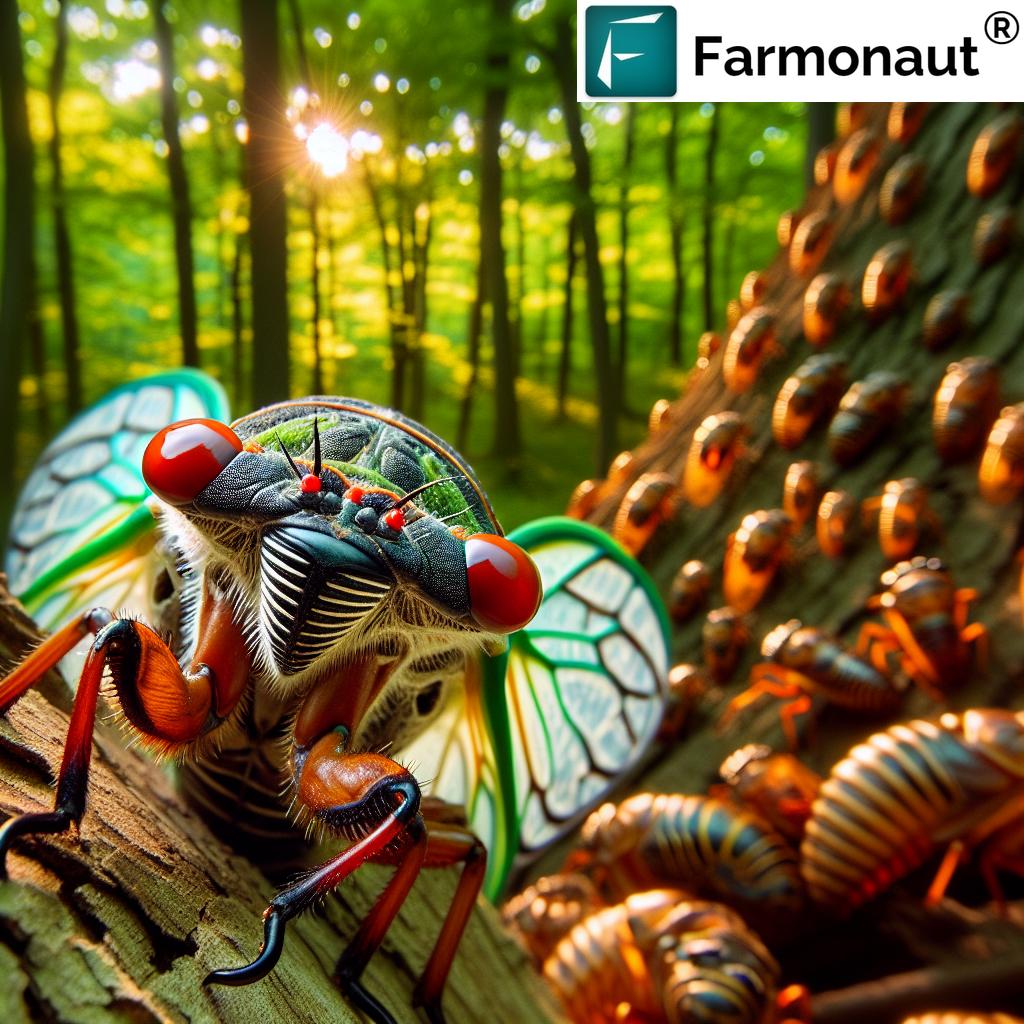Revolutionizing Florida Farming: How Drones and AI Are Shaping the Future of Precision Agriculture
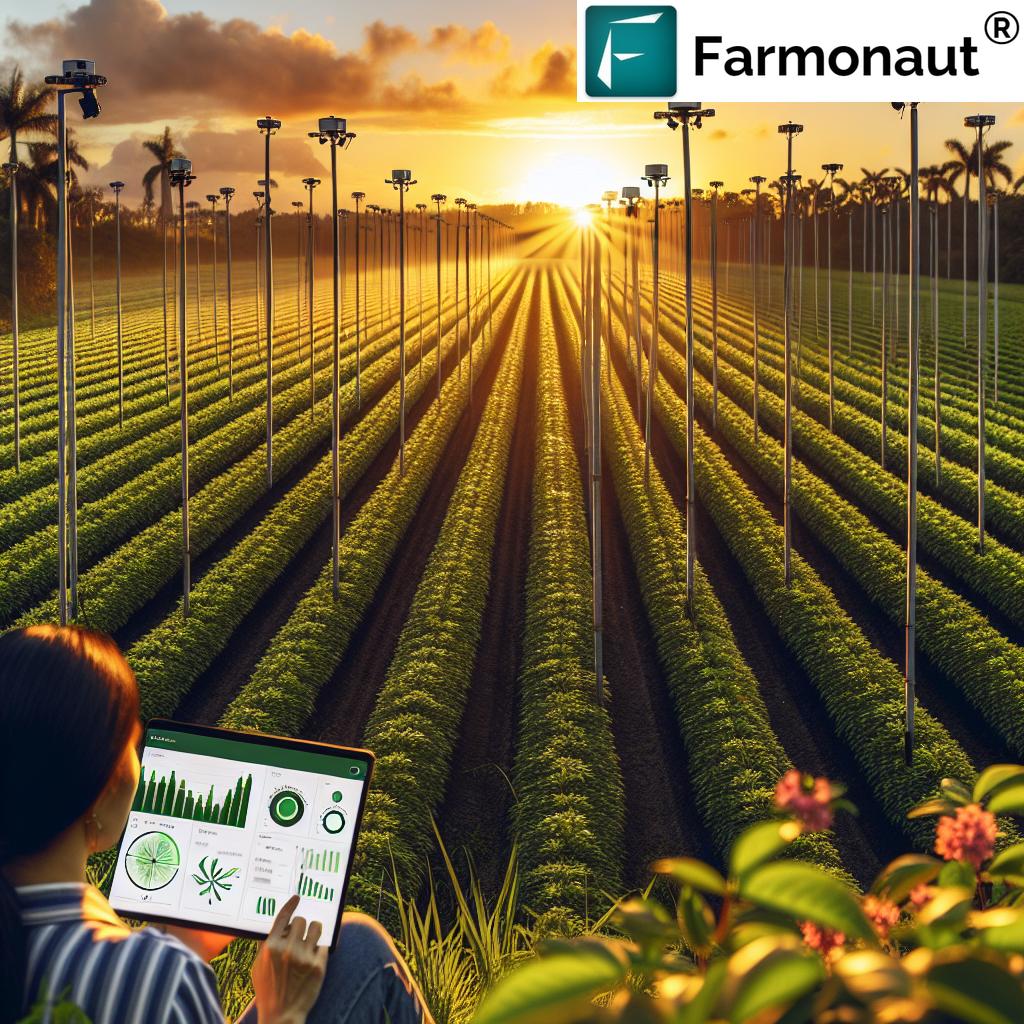
“Florida researchers use drones with specialized cameras to detect plant stress, monitoring over 100 acres in a single flight.”
In the heart of the Sunshine State, a revolution is taking place that’s set to transform the face of agriculture as we know it. We’re witnessing the dawn of a new era in farming, where cutting-edge technology meets time-honored agricultural practices. At the forefront of this revolution are drones and artificial intelligence (AI), two powerhouses of innovation that are reshaping the landscape of precision agriculture in Florida and beyond.
As we delve into this exciting frontier, we’ll explore how researchers at the University of Florida are pioneering the integration of drone technology in agriculture and AI in farming. These advancements are not just futuristic concepts; they’re practical solutions addressing real-world challenges faced by farmers today. From detecting nutrient deficiencies to optimizing labor efficiency, these smart farming techniques are paving the way for a more sustainable and productive agricultural sector.
Join us as we soar over the fields of Gainesville and beyond, uncovering how these aerial marvels and their AI counterparts are revolutionizing crop health monitoring, enhancing yield prediction, and ushering in a new age of automated farming systems. We’ll explore the intricate dance between technology and nature, and how this symbiosis is shaping the future of agriculture in Florida and across the globe.
The Rise of Precision Agriculture in Florida
Precision agriculture, a farming management concept based on observing, measuring, and responding to inter and intra-field variability in crops, has found fertile ground in Florida. The state’s diverse agricultural landscape, ranging from citrus groves to vegetable farms, provides an ideal testing ground for innovative farming techniques. At the heart of this agricultural revolution are drones and AI, working in tandem to provide farmers with unprecedented insights into their crops.
Drones: The Eyes in the Sky
Agricultural drones equipped with specialized cameras are becoming an increasingly common sight in Florida’s skies. These unmanned aerial vehicles are capable of capturing a spectrum of light beyond human visibility, allowing scientists and farmers to detect subtle changes in plant health that may indicate stress or nutrient deficiencies.
- Multispectral Imaging: Drones use multispectral cameras to capture data across various light wavelengths, providing detailed information about crop health and soil conditions.
- Thermal Imaging: This technology helps in detecting water stress and irrigation issues by measuring the temperature differences in plants.
- High-Resolution Mapping: Drones create detailed 3D maps of fields, enabling precise planning and management of crops.
AI: The Brain Behind the Operation
While drones gather vast amounts of data, it’s artificial intelligence that transforms this information into actionable insights. AI algorithms analyze the collected data to:
- Detect early signs of pest infestations or diseases
- Predict crop yields with increasing accuracy
- Optimize fertilizer and water usage based on plant needs
- Generate automated alerts for areas requiring immediate attention
This combination of drone technology and AI is revolutionizing how farmers in Florida approach crop management, leading to more efficient use of resources and improved yields.
Addressing Key Challenges in Modern Farming
The integration of drones and AI in Florida’s agricultural sector is not just about embracing new technology; it’s about solving real problems faced by farmers. Two critical challenges that this innovative approach addresses are nutrient deficiencies in crops and the labor-intensive nature of traditional farming methods.
Tackling Nutrient Deficiencies
Nutrient deficiencies can significantly impact crop yields and quality. Traditional methods of detecting these issues often rely on visual inspection, which can be time-consuming and may miss early signs of trouble. Here’s how drone technology and AI are changing the game:
- Early Detection: Drones equipped with multispectral cameras can identify signs of nutrient stress before they become visible to the naked eye.
- Precise Diagnosis: AI algorithms analyze drone-captured images to pinpoint specific nutrient deficiencies, allowing for targeted interventions.
- Optimal Fertilizer Application: With accurate data on crop health, farmers can apply fertilizers more efficiently, reducing waste and environmental impact.
Reducing Labor Intensity
Traditional farming methods often require significant manual labor for tasks such as crop monitoring and pest control. The integration of drones and AI is helping to alleviate this burden:
- Automated Scouting: Drones can cover large areas quickly, reducing the need for manual field inspections.
- Data-Driven Decision Making: AI-powered systems analyze drone data to provide farmers with actionable insights, streamlining the decision-making process.
- Precision Application: Drones can be used for targeted spraying of pesticides or fertilizers, reducing the need for blanket applications and manual labor.
By addressing these challenges, drone technology and AI are not only improving crop yields but also making farming more sustainable and less labor-intensive.
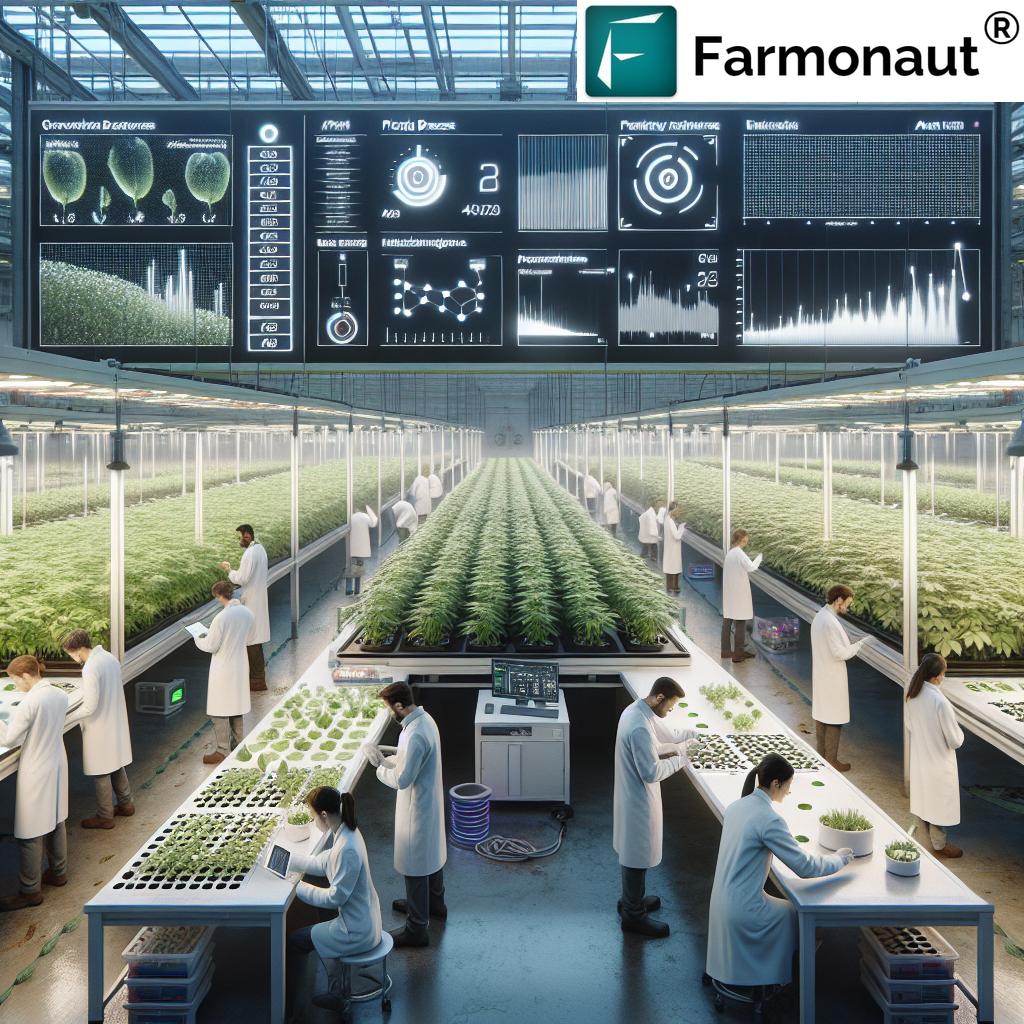
The Science Behind Drone-Assisted Farming
At the University of Florida, researchers are delving deep into the science that makes drone-assisted farming so effective. Let’s explore the cutting-edge technologies and methodologies that are revolutionizing agriculture in the Sunshine State.
Advanced Imaging Technologies
The drones used in agricultural research and practice are equipped with state-of-the-art imaging systems:
- Multispectral Cameras: These capture data from multiple light bands, including those invisible to the human eye, such as near-infrared.
- Hyperspectral Sensors: Providing even more detailed data, these sensors can detect subtle variations in plant health and soil conditions.
- LiDAR (Light Detection and Ranging): This technology creates precise 3D maps of the terrain, useful for planning and monitoring crop growth.
Data Analysis and Interpretation
The vast amount of data collected by drones is processed using sophisticated AI algorithms:
- Machine Learning Models: These are trained to recognize patterns indicating crop health, stress, or disease.
- Computer Vision: AI systems analyze images to detect and classify various crop conditions automatically.
- Predictive Analytics: By combining historical data with real-time observations, AI can forecast crop yields and potential issues.
Integrating with Other Technologies
Drone and AI technologies don’t work in isolation. They’re part of a larger ecosystem of smart farming techniques:
- IoT Sensors: Ground-based sensors provide complementary data on soil moisture, temperature, and other factors.
- GPS and GIS: These technologies enable precise mapping and location-based data analysis.
- Automated Farming Systems: Drones and AI integrate with smart irrigation systems and autonomous farm equipment for a comprehensive precision agriculture approach.
This integration of technologies is creating a new paradigm in agriculture, where data-driven decisions lead to more efficient and sustainable farming practices.
Real-World Applications in Florida Farming
The theoretical benefits of drone technology and AI in agriculture are impressive, but how are they being applied in the real world of Florida farming? Let’s explore some concrete examples of how these technologies are making a difference in the fields and groves of the Sunshine State.
Citrus Grove Management
Florida’s iconic citrus industry has been facing challenges from diseases like citrus greening. Drones and AI are providing new tools in this fight:
- Early Disease Detection: Drones equipped with hyperspectral cameras can detect signs of citrus greening before visible symptoms appear, allowing for early intervention.
- Targeted Treatment: AI algorithms analyze drone data to identify specific trees requiring treatment, reducing the need for blanket spraying of pesticides.
- Yield Estimation: Advanced imaging and AI analysis provide accurate estimates of fruit yield, helping growers plan harvesting and marketing strategies.
Vegetable Crop Monitoring
Florida’s diverse vegetable crops benefit from precision monitoring:
- Water Management: Thermal imaging from drones helps identify areas of water stress, allowing for precise irrigation adjustments.
- Nutrient Mapping: Multispectral imaging creates detailed maps of nutrient levels across fields, enabling targeted fertilizer application.
- Pest and Disease Tracking: AI-powered image analysis can track the spread of pests or diseases, facilitating timely and localized interventions.
Strawberry Production Optimization
Florida’s strawberry growers are leveraging drone and AI technologies to enhance production:
- Growth Stage Monitoring: Drones capture high-resolution images that AI analyzes to track plant growth stages, optimizing harvest timing.
- Soil Health Assessment: Multispectral imaging provides insights into soil health, helping growers maintain optimal conditions for strawberry plants.
- Frost Protection Planning: By creating detailed topographic maps, drones help growers plan more effective frost protection strategies.
These real-world applications demonstrate how drone technology and AI are not just futuristic concepts but practical tools that are already making a significant impact on Florida’s agricultural landscape.
“AI-powered agricultural systems can analyze up to 1000 data points per second, revolutionizing crop health assessment.”
The Future of Agriculture: A Semi-Autonomous Vision
As we look to the horizon of agricultural innovation, the integration of drones and AI is paving the way for a future where farming operations resemble highly efficient, semi-autonomous systems. This vision, being developed and tested at institutions like the University of Florida, promises to transform the agricultural landscape dramatically.
Automated Farming Systems
The future of agriculture is increasingly automated, with several key components:
- Drone Swarms: Multiple drones working in coordination to monitor and manage large agricultural areas.
- AI-Driven Decision Making: Advanced algorithms that can make real-time decisions on crop management, from irrigation to pest control.
- Robotic Harvesters: Autonomous machines that can identify ripe produce and harvest it with precision.
- Smart Irrigation Systems: Water management systems that respond to real-time data on soil moisture and plant needs.
Reduced Manual Labor
One of the most significant impacts of this technological revolution is the reduction in manual labor required for farming operations:
- Remote Monitoring: Farmers can oversee large areas of land from a central location, reducing the need for physical field inspections.
- Precision Tasks: Drones and robots can perform tasks like planting, spraying, and harvesting with greater accuracy and efficiency than manual methods.
- Data Analysis: AI systems can process vast amounts of data, providing insights that would be impossible for humans to derive manually.
Enhanced Resource Management
The semi-autonomous farm of the future will be characterized by highly efficient use of resources:
- Precision Application: Fertilizers, pesticides, and water will be applied only where and when needed, reducing waste and environmental impact.
- Energy Efficiency: Automated systems can optimize energy use, potentially integrating renewable energy sources like solar power.
- Waste Reduction: AI-driven predictive analytics can help reduce crop losses and optimize harvesting, minimizing food waste.
This vision of the future aligns with the goals of sustainable agriculture, promising increased productivity while reducing the environmental footprint of farming operations.
The Role of Farmonaut in Agricultural Innovation
As we explore the exciting developments in drone technology and AI in agriculture, it’s important to highlight the role of innovative companies like Farmonaut in this technological revolution. Farmonaut is at the forefront of agricultural technology, offering advanced satellite-based farm management solutions that complement and enhance the use of drones and AI in precision agriculture.
Satellite-Based Crop Health Monitoring
Farmonaut’s platform leverages satellite imagery to provide farmers with valuable insights:
- Vegetation Health Index (NDVI): Monitoring crop health across large areas, complementing drone-based observations.
- Soil Moisture Analysis: Providing data on soil conditions to optimize irrigation and water management.
- Historical Data Comparison: Allowing farmers to track changes in their fields over time and make informed decisions.
AI-Powered Advisory System
Farmonaut’s Jeevn AI system offers personalized farm advisory services:
- Real-Time Insights: Analyzing satellite data and other inputs to provide timely advice on crop management.
- Weather Forecasting: Integrating weather data to help farmers plan their activities effectively.
- Crop Management Strategies: Offering expert recommendations tailored to specific crop types and local conditions.
Integration with Drone Technology
While Farmonaut primarily uses satellite data, its platform can integrate seamlessly with drone-based systems:
- Complementary Data Sources: Combining satellite and drone data for more comprehensive farm monitoring.
- API Integration: Allowing for easy integration of Farmonaut’s satellite data with drone-based systems through their API (Farmonaut API).
- Holistic Farm Management: Providing a complete picture of farm health by combining various data sources.
By offering these advanced solutions, Farmonaut is playing a crucial role in making precision agriculture more accessible and affordable for farmers of all scales. Their platform demonstrates how satellite technology can work hand-in-hand with drone and AI innovations to drive the future of agriculture.
For those interested in exploring Farmonaut’s solutions, you can access their web app here:
Additionally, mobile apps are available for both Android and iOS users:
Impact on Profit Margins and Sustainability
The integration of drone technology and AI in agriculture, complemented by satellite-based solutions like those offered by Farmonaut, is not just about technological advancement. It’s about creating a more profitable and sustainable agricultural sector. Let’s explore how these innovations are impacting farmers’ bottom lines and environmental stewardship.
Improving Profit Margins
The adoption of precision agriculture techniques can significantly boost farmers’ profitability:
- Reduced Input Costs: By optimizing the use of fertilizers, pesticides, and water, farmers can significantly lower their input costs.
- Increased Yields: Early detection of issues and precise management lead to healthier crops and higher yields.
- Labor Efficiency: Automation and AI-driven insights reduce labor costs and improve workforce productivity.
- Minimized Crop Losses: Early detection of diseases and pests helps prevent large-scale crop failures.
Enhancing Sustainability
These technologies also contribute to more sustainable farming practices:
- Reduced Chemical Use: Precision application of pesticides and fertilizers minimizes environmental impact.
- Water Conservation: Smart irrigation systems and soil moisture monitoring lead to more efficient water use.
- Soil Health: Data-driven crop rotation and management practices help maintain long-term soil health.
- Biodiversity Protection: Targeted pest control methods reduce the impact on beneficial insects and wildlife.
Long-Term Benefits
The adoption of these technologies offers long-term advantages for farmers and the environment:
- Resilience to Climate Change: Better data and predictive models help farmers adapt to changing climate conditions.
- Sustainable Intensification: Producing more food on existing farmland reduces the pressure to convert natural habitats to agriculture.
- Carbon Footprint Reduction: Efficient resource use and reduced machinery operations lower the carbon footprint of farming activities.
By leveraging these technologies, Florida farmers are not only improving their current operations but also investing in the long-term sustainability of their farms and the broader agricultural sector.
Challenges and Considerations
While the benefits of integrating drones, AI, and satellite technology in agriculture are substantial, it’s important to acknowledge the challenges and considerations that come with this technological shift. Understanding these factors is crucial for successful implementation and widespread adoption.
Initial Investment and Learning Curve
- Cost Barriers: The initial investment in drone technology and AI systems can be significant, particularly for small-scale farmers.
- Technical Expertise: Farmers and farm managers need to acquire new skills to effectively use and interpret data from these technologies.
- Integration Challenges: Incorporating new technologies into existing farm operations can be complex and time-consuming.
Data Management and Privacy Concerns
- Data Security: As farms become more data-driven, ensuring the security and privacy of farm data becomes crucial.
- Data Ownership: Questions about who owns and controls the data collected by these technologies need to be addressed.
- Regulatory Compliance: Farmers must navigate regulations related to drone use and data collection.
Technology Limitations
- Weather Dependency: Drone operations can be affected by adverse weather conditions, limiting their use.
- Battery Life: Current drone battery technology limits flight times, which can be an issue for large farms.
- Connectivity Issues: Rural areas may face challenges with internet connectivity, impacting real-time data transmission and analysis.
Balancing Technology with Traditional Knowledge
- Over-Reliance on Technology: There’s a risk of losing valuable traditional farming knowledge as reliance on technology increases.
- Human Judgment: While AI can provide insights, human judgment and experience remain crucial in farm management decisions.
- Holistic Approach: Ensuring that technological solutions complement rather than replace sustainable farming practices is essential.
Addressing these challenges will be key to realizing the full potential of drone and AI technologies in agriculture. It requires collaboration between technology providers, researchers, policymakers, and farmers to create solutions that are accessible, effective, and aligned with the diverse needs of the agricultural community.
Comparative Analysis: Traditional vs. Drone-Assisted Farming
To better understand the impact of drone and AI technology on Florida agriculture, let’s examine a comparative analysis between traditional farming methods and drone-assisted farming techniques.
| Agricultural Aspect | Traditional Farming | Drone-Assisted Farming |
|---|---|---|
| Crop Health Monitoring (Time spent) | 40-50 hours/week for 100 acres | 5-10 hours/week for 100 acres |
| Fertilizer Application Efficiency (%) | 60-70% | 85-95% |
| Early Stress Detection Accuracy (%) | 50-60% | 80-90% |
| Labor Hours Required (per acre) | 15-20 hours | 5-8 hours |
| Estimated Yield Increase (%) | Baseline | 10-20% increase |
| Water Usage Optimization (%) | 70-75% | 85-95% |
| Pest and Disease Management (Effectiveness rating) | 6/10 | 8.5/10 |
This comparison clearly illustrates the significant improvements that drone-assisted farming brings to various aspects of agriculture in Florida. The efficiency gains in crop monitoring, resource application, and overall management are substantial, leading to increased yields and more sustainable practices.
Case Study: University of Florida Research Project
To provide a concrete example of how drone technology and AI are being applied in Florida agriculture, let’s examine a recent research project conducted at the University of Florida.
Project Overview: A team of researchers led by PhD student Moses Chilenje and Agriculture and Biological Engineering Professor Henry Medeiros conducted a study on the use of drones for crop monitoring and stress detection in citrus groves.
Methodology:
- Drones equipped with multispectral and thermal cameras were used to survey citrus groves in central Florida.
- AI algorithms were developed to analyze the drone-captured images and detect early signs of citrus greening disease.
- The study compared the effectiveness of drone-based detection with traditional ground-based scouting methods.
Key Findings:
- Drone-based detection identified citrus greening symptoms up to two weeks earlier than visual inspection.
- The AI system achieved an accuracy rate of 92% in identifying infected trees, compared to 78% for traditional methods.
- The drone-based approach reduced the time required for surveying a 100-acre grove from 40 hours to just 2 hours.
Implications: This research demonstrates the potential of drone and AI technology to revolutionize disease management in Florida’s citrus industry. Early detection allows for more targeted and effective treatments, potentially saving millions of dollars in crop losses annually.
This case study exemplifies how the University of Florida is at the forefront of agricultural innovation, developing practical applications of drone and AI technology that directly benefit Florida farmers.
The Role of Farmonaut in Complementing Drone Technology
While drones are revolutionizing on-the-ground farm management, Farmonaut’s satellite-based solutions offer a complementary approach that enhances the overall effectiveness of precision agriculture. Let’s explore how Farmonaut’s technology works in tandem with drone-based systems to provide comprehensive farm management solutions.
Satellite-Based Crop Monitoring
Farmonaut’s platform uses satellite imagery to provide broad-scale insights into crop health and field conditions:
- Wide Coverage: Satellite imaging can cover vast areas quickly, complementing the detailed, low-altitude data from drones.
- Frequent Updates: Regular satellite passes provide consistent data, filling gaps between drone flights.
- Historical Analysis: Farmonaut’s platform allows for long-term trend analysis, which is crucial for understanding crop patterns over time.
AI-Powered Advisory System
Farmonaut’s Jeevn AI system integrates satellite data with other sources to provide actionable insights:
- Complementary Data Analysis: AI algorithms can combine satellite data with drone-collected information for more comprehensive farm assessments.
- Predictive Modeling: By analyzing historical and current data, Farmonaut’s AI can predict potential issues before they become visible, even from drones.
- Customized Recommendations: The system provides tailored advice that can guide both drone operations and general farm management decisions.
Integration and Accessibility
Farmonaut’s platform is designed to integrate seamlessly with other agricultural technologies:
- API Integration: Farmonaut’s API allows for easy integration of satellite data with drone management systems and other farm technologies. For more information, visit Farmonaut API Developer Docs.
- Mobile Access: With Farmonaut’s mobile apps, farmers can access satellite-derived insights on-the-go, complementing real-time data from drones.
- User-Friendly Interface: The platform presents complex data in an easy-to-understand format, making it accessible to farmers regardless of their technical expertise.
By combining the strengths of satellite technology with drone-based systems, Farmonaut helps create a more comprehensive and effective approach to precision agriculture. This integration allows Florida farmers to make more informed decisions, optimize resource use, and improve overall farm productivity.
Future Trends and Innovations
As we look to the future of agriculture in Florida and beyond, several emerging trends and innovations are set to further transform the industry. These developments build upon the foundation laid by current drone and AI technologies, promising even greater advancements in precision agriculture.
Advanced AI and Machine Learning
- Deep Learning Algorithms: More sophisticated AI models will be able to analyze complex patterns in crop health and predict issues with even greater accuracy.
- Autonomous Decision-Making: AI systems may evolve to make real-time decisions on farm management, such as adjusting irrigation or initiating pest control measures.
- Predictive Yield Modeling: Advanced AI will provide more accurate long-term yield predictions, helping farmers and markets prepare for future harvests.
Internet of Things (IoT) Integration
- Sensor Networks: Widespread deployment of IoT sensors will provide continuous, real-time data on soil conditions, weather, and crop health.
- Smart Farm Equipment: Farm machinery will become increasingly connected, sharing data and responding to AI-driven commands.
- Blockchain Technology: Implementation of blockchain could enhance traceability in the food supply chain, from farm to consumer.
Advanced Drone Technologies
- Swarm Technology: Multiple drones working in coordination could cover larger areas more efficiently.
- VTOL (Vertical Take-Off and Landing) Drones: These could combine the benefits of multirotor and fixed-wing drones for improved efficiency.
- Drone-to-Drone Communication: Enhanced communication between drones could lead to more sophisticated and coordinated farming operations.
Genetic Engineering and Precision Breeding
- CRISPR Technology: Advancements in gene editing could lead to crops that are more resistant to pests, diseases, and climate change.
- Data-Driven Breeding: AI analysis of genetic and environmental data could accelerate the development of crops optimized for specific conditions.
Climate-Smart Agriculture
- Adaptive Farming Practices: AI-driven systems will help farmers adapt to changing climate conditions in real-time.
- Carbon Sequestration: Precision agriculture techniques could be optimized to enhance soil carbon sequestration, contributing to climate change mitigation.
As these trends continue to evolve, companies like Farmonaut will play a crucial role in integrating new technologies into accessible, user-friendly platforms. The future of agriculture in Florida and globally looks bright, with technology paving the way for more efficient, sustainable, and productive farming practices.
Conclusion: Embracing the Agricultural Revolution
As we’ve explored throughout this article, the integration of drones, AI, and satellite technology is ushering in a new era of precision agriculture in Florida and beyond. From the pioneering research at the University of Florida to the innovative solutions offered by companies like Farmonaut, we’re witnessing a transformation that promises to make farming more efficient, sustainable, and productive.
Key takeaways from our exploration include:
- Drones and AI are revolutionizing crop health monitoring, allowing for early detection of issues and more targeted interventions.
- These technologies are addressing critical challenges in modern farming, such as nutrient deficiencies and labor intensity.
- The combination of drone-based data collection and AI-powered analysis is enabling more precise and efficient use of resources.
- Satellite-based solutions, like those offered by Farmonaut, complement drone technology, providing a comprehensive approach to farm management.
- The future of agriculture is moving towards semi-autonomous systems that promise to increase productivity while reducing environmental impact.
While challenges remain, particularly in terms of initial investment an





